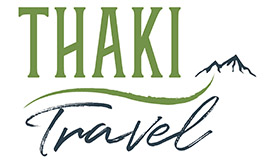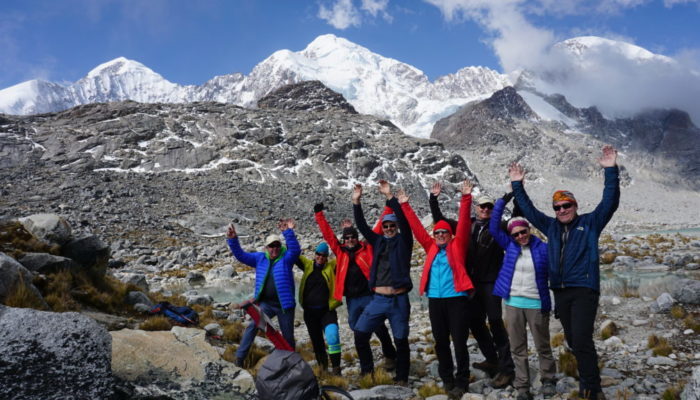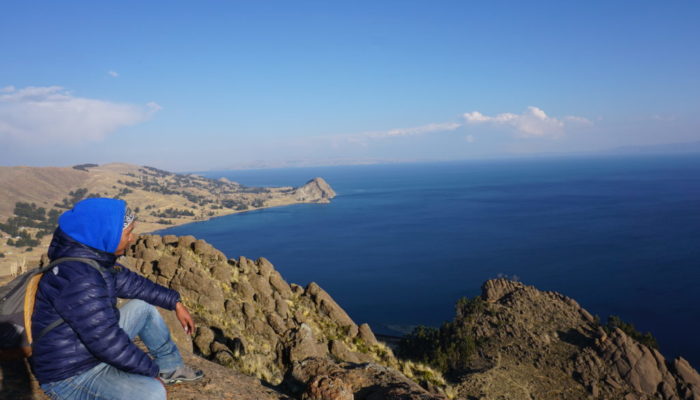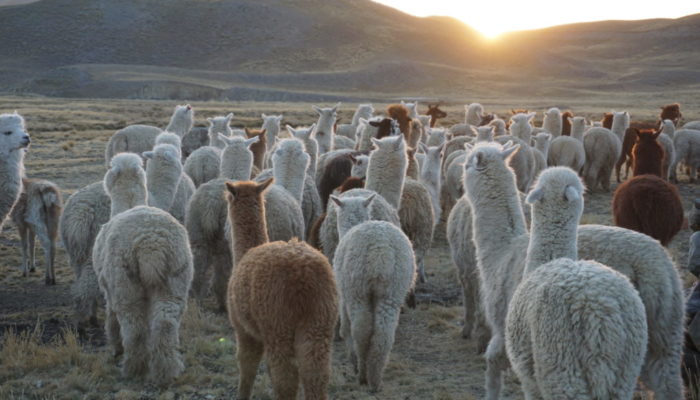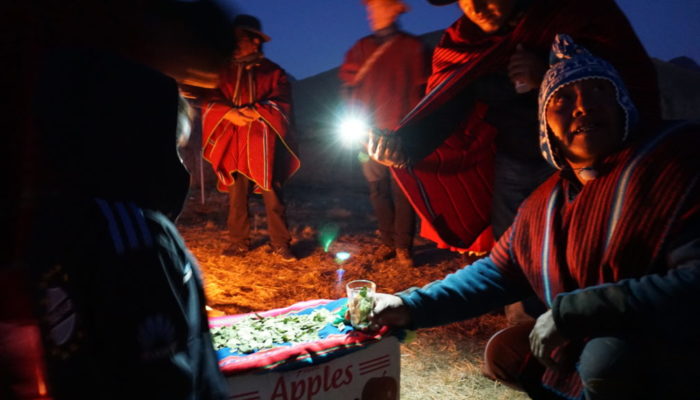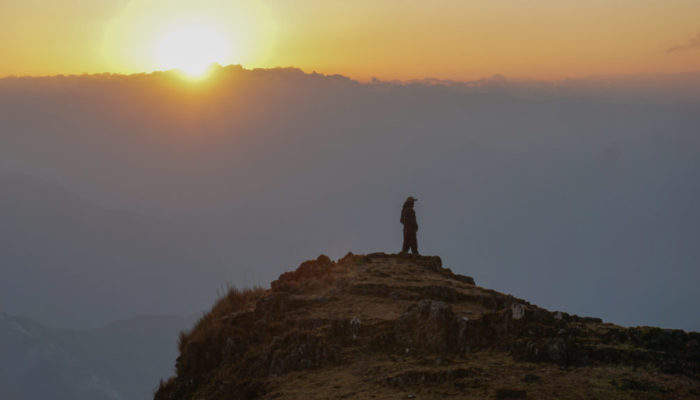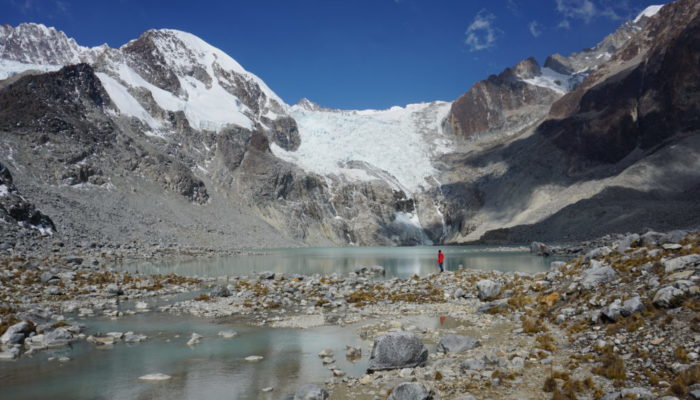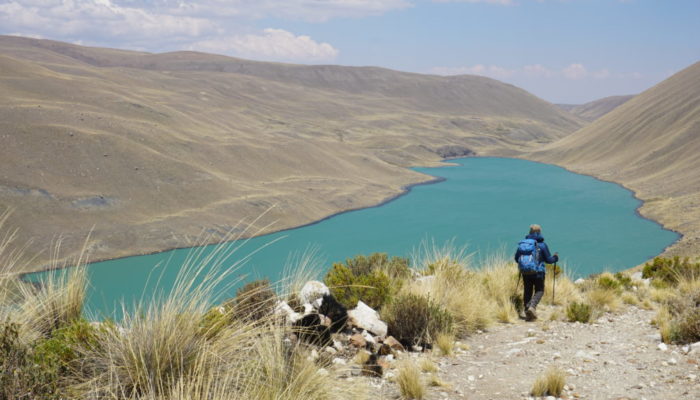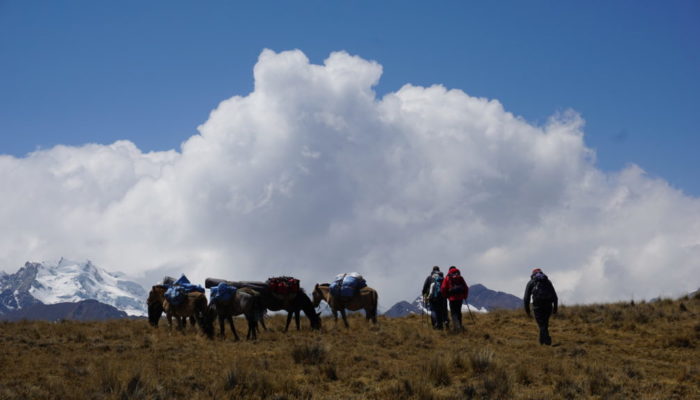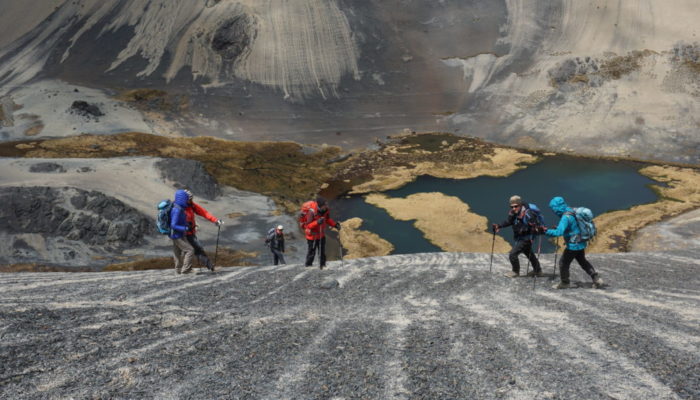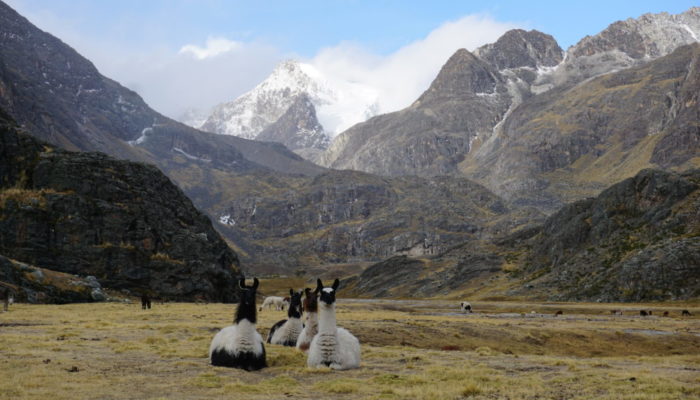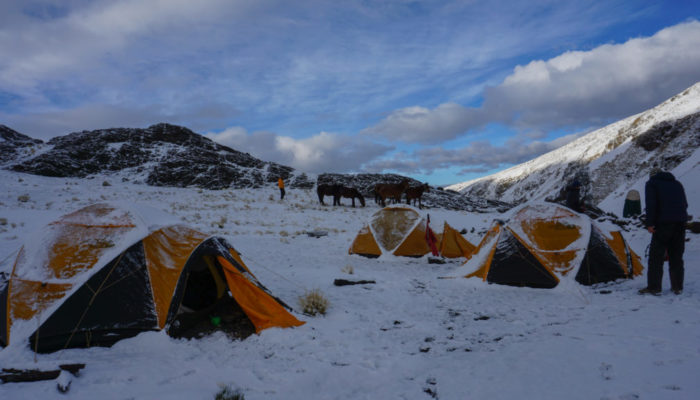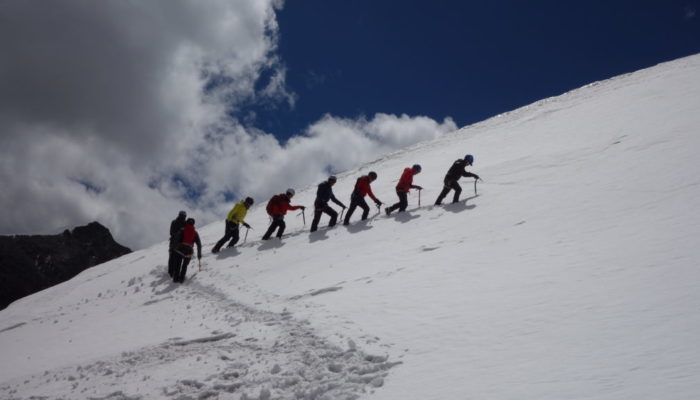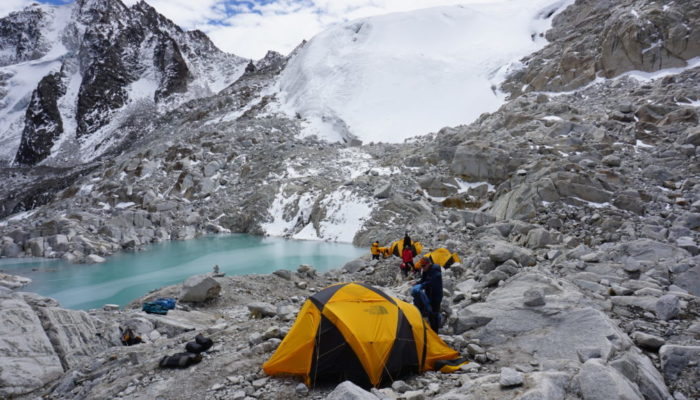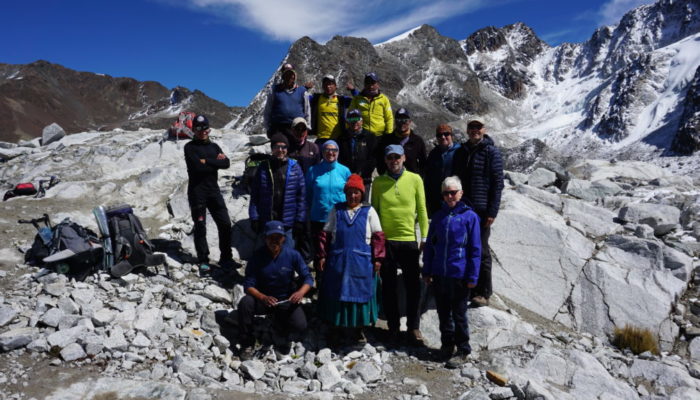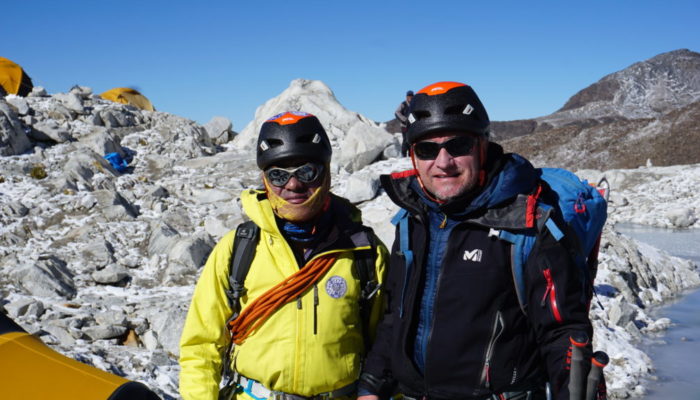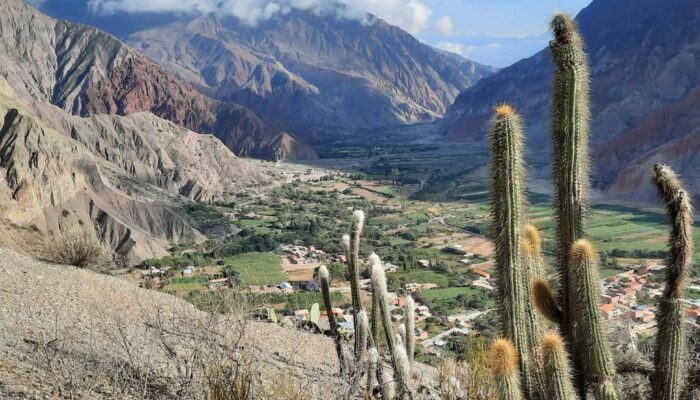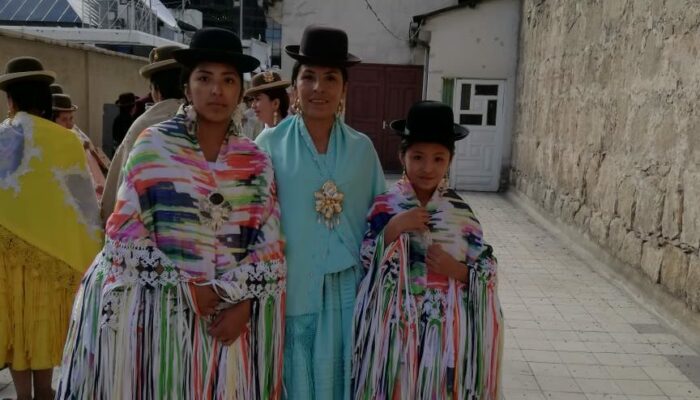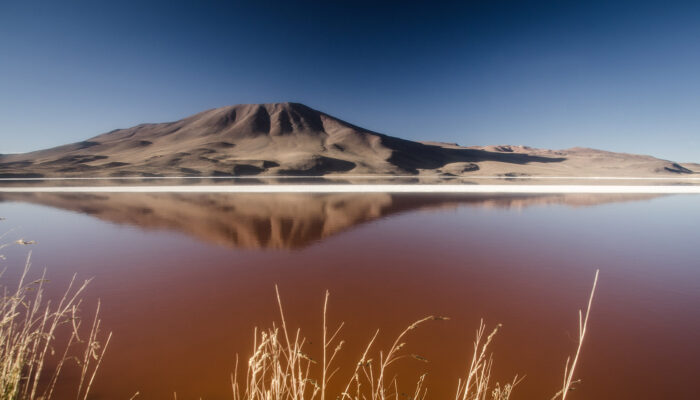Text and pictures by Didier Winderickx.
At 37 years old, in love with Bolivia and passionate about mountains, Anne Bialek gave up on her engineering career, her villa in Cavaillon overlooking the Ventoux mountains (in France) and even more … She worked during two years for a travel agency in La Paz, before starting her own company, “Thaki Travel”, with her friend Jérôme Benassi. Thaki means «pathway» in Aymara. After 10 years of activity, she has built a solid reputation, mostly based on word of mouth. Her approach is based on ethics and on the respect of local communities.
It was just a matter of putting a word in for this information with Eric … and here we are, in this month of August, eight participants starting an adventure together on the «Thakis» of Bolivia.
As soon as we landed, we started to feel the impacts of altitude. It is necessary to say that the airport of La Paz-El Alto, located at 4061 meters a.s.l, is the highest in the world. Froilan, our minibus driver, immediately offered us a “maté de coca”; it helped ! In any case, he never separates from his small pack of coca leaves; he regularly puts some more in his mouth, at the risk of having a big cheek, in order to extract the juice. We will all have the opportunity to try this method … We can’t say that it is good ! Personally, it reminded me the taste of old spinach …
In our hotel in La Paz, Anne gave us a complete briefing about our stay and our trekking in the Royal Mountains, before introducing us to our guide, Javier. He speaks a perfect french. He showed us around some must-sees of La Paz, such as the «witch market». Most of Bolivians, since the Spanish colonization, are Catholics but they remain committed to their ancestral traditions, inspired by pre-Inca civilizations, and composed by many rites.
Javier introduces us to Ekéko, a small chubby character, full of small artefact in the style of a Christmas tree. According to the tradition, if you buy for him a small version of an item you wish, it would be easier to get it in reality. It works for example for cars, houses and even certificates ! Students take note !
The Pachamama, Mother Earth, is honored as well in many opportunities. During the aperitif – so yes, even in trekking, we had our aperitif – Bolivians keep the first drops for the Pachamama simply by pouring some on the ground. By the way, «cheers» is said «Hayaya»; always good to know !
Indeed, Spanish is the common spoken language but the main ethnolinguistic groups remain the Quechua and the Aymara.
From La Paz, we drove for 70 kilometers in the Altiplano to discover the area of Tiwanaku. The civilization of Tiwanaku is a Pre-Inca civilization that has dominated the southern half of the Central Andes between the 5th and the 6th century. We discovered the pyramid of Akapama and its famous Sun Gate, the temple of Kalasasaya and the monoliths «Benett», «Ponce» and «Kon-Tiki», that some archeologist compare with Moaïs from Easter Island.
Then, we arrived to the monastery of José Ferrari, in Chuquinapi, just in time to admire the sunset on the Titicaca Lake. We spent two days there, livened up by a catamaran ride. Sublime moment on the great blue. Located at 3800 meters a.s.l, it is the highest navigable lake in the world.
Next step, we are warmly welcomed by families from the community of Santiago de Okola. Our local guide and Javier explained to us that every village is organized in community. Each family alternately have to designate the chief for a year. Nobody can be evasive on this responsibility. The leader of the community takes the administrative decisions, takes care of justice, regulates legacy matters and any dispute … Refusing to conform to his decision is not an insignificant action. It can be solved by a fight or in the worst case, by the exclusion from the community.
After a traditional weaving demonstration, we go for an acclimatization walk on the «Sleeping Dragon» (4095 meters a.s.l). The panorama on the Titicaca Lake is amazing.
Before diner, the leader of the community organized an offering celebration to the Pachamama in order to bring protection to our little expedition. At night, we attended some traditional dancing, around a camp fire. Bolivian songs are not really short… adding to that the smoke of the wooden fire, without forgetting the acceleration of rhythm at the end of each song, all that at about 4500 meters a.s.l … that’s what we can call an effective acclimatization !
But we are not done yet with our acclimatization ! The next day, departure for the ascent of Pico Austria, which culminates at 5300 meters a.s.l. The 920 meters of elevation are worth it. From the summit, the panorama on the Condoriri Mountains is outstanding.
We spent a night in Sorata, at (only) 2600 meters a.s.l. In this village, nestled at the bottom of a valley and at the foot of the Illampu and Ancohuma mountains, we rested as much as possible, in this little tropical heaven.
Then, the real fun begins ! A minibus, acting like it was a 4WD vehicle, took us to the trekking departure point. We met Henry, our trekking guide, that we had met already in Tuni. There are many mule drivers and a dozen of mules. Francisco and his wife Rogelia are putting order in the supplies. The load is impressive. While all these people are busy, we started the ascent. Barely an hour or two later, the mule procession caught us again and nearly left us behind. Our cooks did not hesitate to take shortcuts, steeper obviously, in order to arrive before us at the destination of the day and start to prepare the meal. On our side, we were paying close attention to control our breathing … let’s stay humble !
We reached the Chilata Lagoon (4200 meters a.s.l) in the beginning of the afternoon. Lunch and bivouac on the shores of the lake. In the afternoon, the elements got unleashed. The lull reveals a spectacular landscape.
Second day of trekking. In a narrow part, a big block fell on Philippe’s foot. The unlucky one preferred to continue the hike and waited until the end of the day before taking off his shoe …
The path was raising and ended by a small session of moraine trudging to the Glaciar Lagoon (5045 m a.s.l). We were very lucky to be able to contemplate this huge glacial strip with a clear weather. The Illampu’s main peak was enhancing the majestic nature of the place. Descent in a rocky chaos to Campo Venado (4300 m a.s.l).
At the bivouac, Phillipe’s foot was in pretty bad shape. His second toe had nearly exploded. The big toe is affected as well. Is the rest of the trek compromised for him ? Finally, thanks to the treatment dispensed day and night by Eric and Michelle, he managed to avoid the infection, bravely finishing the trek and even tried the ascent of the Chachacomani.
The trek goes on and alongside Mina Susana, a silver and tin mine. There we have the occasion to exchange some words with a miner ; Henry is our translator. He works in the mine since 40 years. He started with his father, at the age of 13. The fate of Bolivian miners is far to be enviable. Most of them die young, because labor conditions are so hard and safety norms almost don’t exist. The mine fills in a whole hill. Crevices comes out on the slope on which miners are discharging ores. Tunnels sink into horizontally for about a hundred meters. The mine is managed by a cooperative firm and employs 14 miners. Bolivia takes very little advantage of its mining resources. Most of the ores are exported in their natural state, because of the unfortunate inability of the country to process them himself.
A stubborn toothache forced Annick to stop. With the company of Primo, our guiding assistant, Michel and Annick followed the valley leading to the village of Millipaya where a car will drop them back in La Paz.
So now we are only 6 participants left to reach the bivouac of Lojena (4360 m a.s.l).
And there, surprise! Henry prepared us a warm shower! Simple: a spray full of warm water connected to a shower head. All you need is to pump! What a luxury!
The next day is ending with a beautiful panorama on the turquoise lake of San Francisco.
Next to the camp, there were water sources. So we decide to go for a little swim at 39°C, at nearly the same altitude as the Mont Blanc, with a sublime setting.
The next step will be harsh, as we will have to pass 3 cols at almost 5000 meters a.s.l ! Some snowy parts at the end and we reached the Chojna Quta Lagoon (4720 meters a.s.l), one of the most beautiful «sleeping area» of the Royal Cordillera.
The two following days made us experience huge valleys, cols and schist screes. We finally could camp next to the Chiscacalliuani Lake (phew !) (4820 meters a.s.l), last step of the trek.
Do you really think we’re done ? Absolutely not ! By preparing this itinerary in the Royal Cordillera, Eric had perceived that the Chachacomani and its 6074 meters of altitude were not really far any more … Well, not really far ? We will need one more walking day to reach and cross the Rio Chacha Kumani valley to get to the base camp (4470 meters a.s.l) and half a day more to reach, in a rocky chaos, the high camp at 5130 meters a.s.l. And there again, the beautiful landscape made us forget about our tiredness ! The camp is established at the edge of the glacier which plunges in a small milky turquoise blue lake. The place is just magical ! Two mountains guides, Hugo and Julio (nicknamed El Tractor) as well as Benigno, guide-aspirant, accompanied us from the base camp.
In the afternoon, with our guides, some went to do training, some went on an initiation course on how to walk on a glacier and use ice axe and crampon.
Sleeping time: 6:00 PM! Well, actually was a real failure! The winds started to blow strong and violently shake our tents for the whole night! And it started snowing as well.
Never mind! We woke up at midnight; took our equipment; had breakfast at 00:30 AM. At 01:00 AM, we were four candidates ready to get to the summit, Eric, Phillipe, Jean-François and myself. With our 3 guides, divided in three rope parties, we started the progression on the glacier. The speed seemed very fast to me from the departure and I was fighting to find the right breathing pace. After a moment, the slope was getting softer. Phew, I recovered ! Obviously, we were walking in total darkness, only with the light of the headlamps. Benigno went ahead. When Julio noticed he was not taking the right way, he shouted at him, draw a small sketch in the snow and everything got back to normal. But how is he doing ? We are unable to distinguish anything around us apart from some shapes and undulations in the snow. And I can tell you there was a lot of snow! We would regularly sink, at knee level and even more.
Some parts had to be done on our hands and knees to get out of them. It was a punishment and so exhausting ! Guides draw our attention on the crevices, hidden by the snow. During a break, we realized we couldn’t see Jean-François and Hugo’s headlamps anymore. They must have gone back. We keept moving. At 5550 meters a.s.l, Phillipe and myself, exhausted, were giving up. We got back down with Benigno. Eric keept ascending with Julio. At times, they will sink so deep in the snow that Julio will adopt a new method, the crawling ! El tractor deserves well his nickname ! They will arrive at 5980 meters a.s.l and will be jammed by a huge crevasse, insurmountable, with no way around without going back down consistently to better get back up again, and finally reaching the crest of the summit. It was getting too much ! Both men will get back down satisfied and frustrated at the same time ! There were so close …!
The high camp was reached in the beginning of the morning. But we are not down yet ! We must get to base camp and then cross the whole Rio Chacha Kumani valley to get to Cruz Pampa where Andrei and his minibus were waiting for us to bring us back to La Paz. Such a long day !
In La Paz, we meet Anne again for a debriefing and mention to her our new passion for the Andes. Then Anne and Javier shared with us a meal at a «Pena», with dances and traditional songs. We said goodbye, remembering Anne’s motto «To each one his own Thaki !».
Participants: Eric and Michelle Thille-Gyling, Michel Leveque and Annick Rouserez, Phillipe Vandeveld and Anne-Marie Nyssen, Jean-François Bolle, Didier Winderickx.
Text written by : Didier Winderickx
